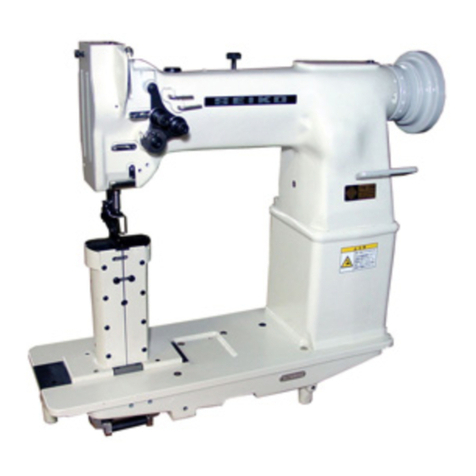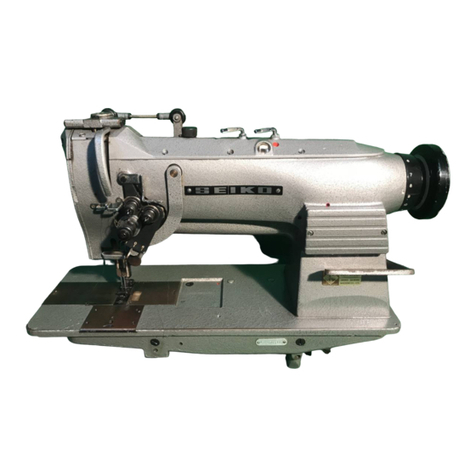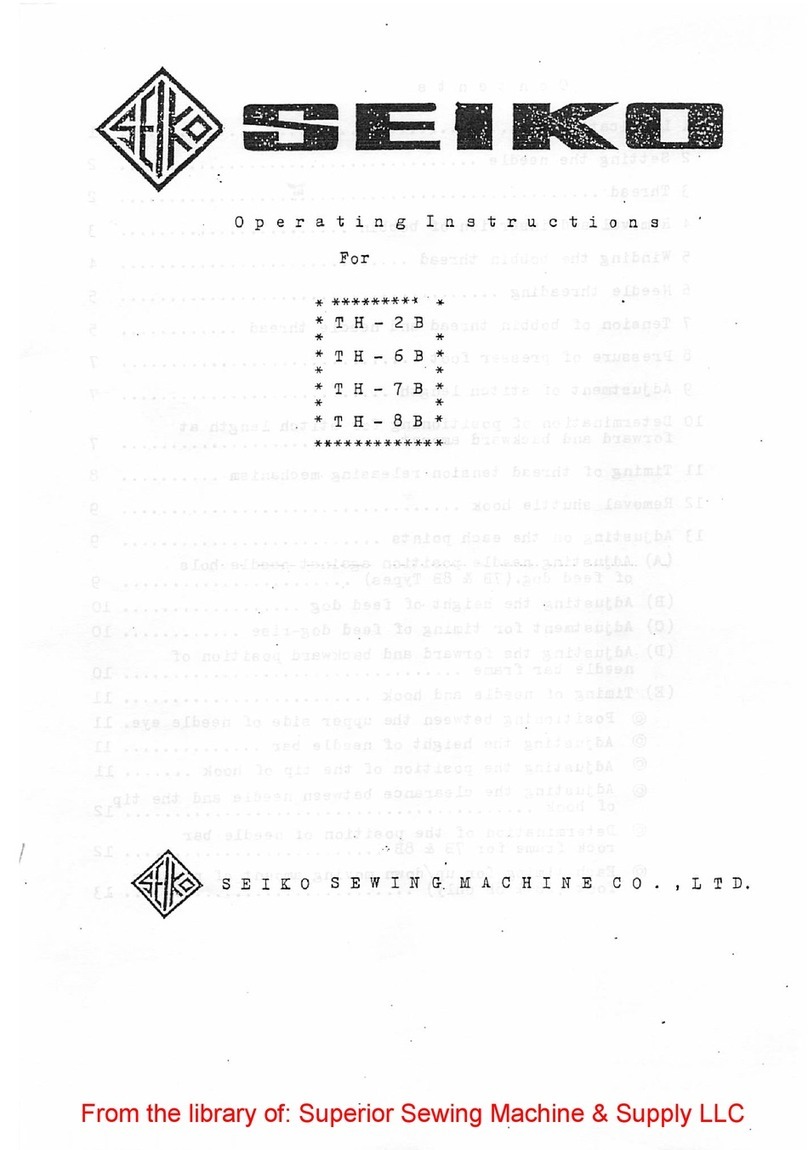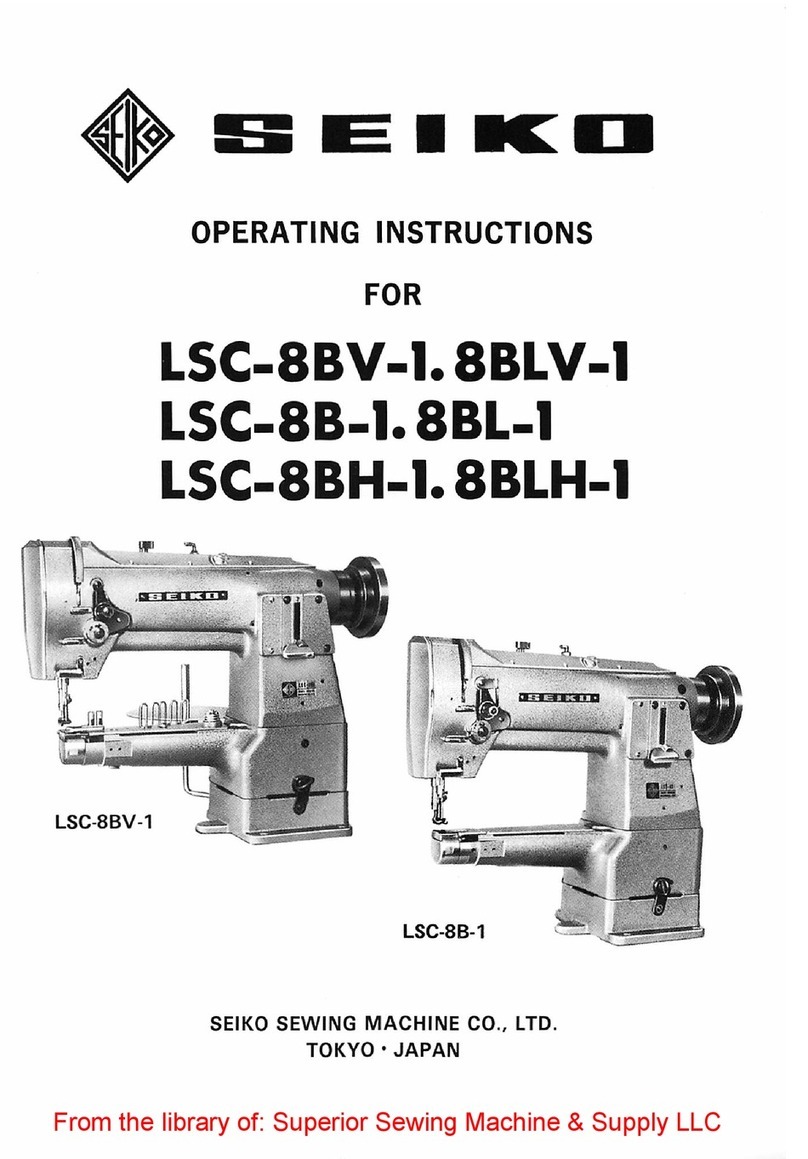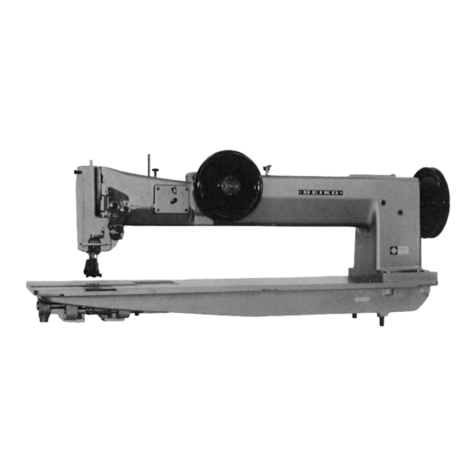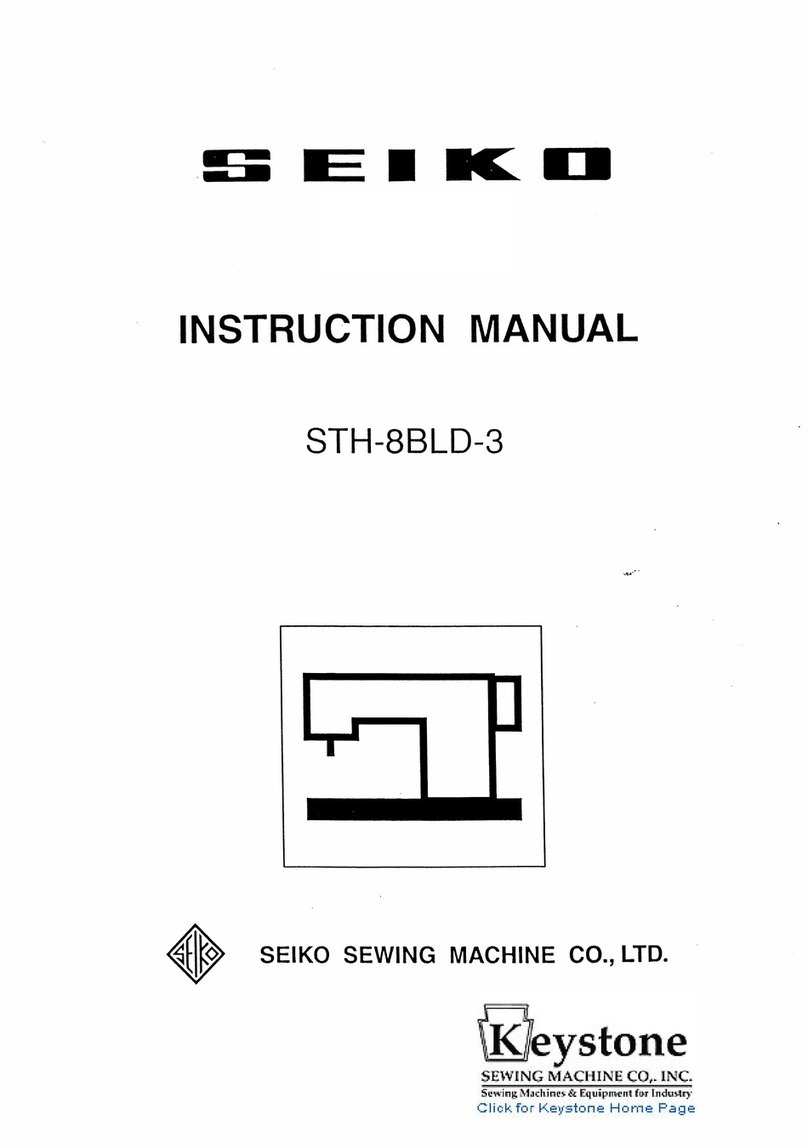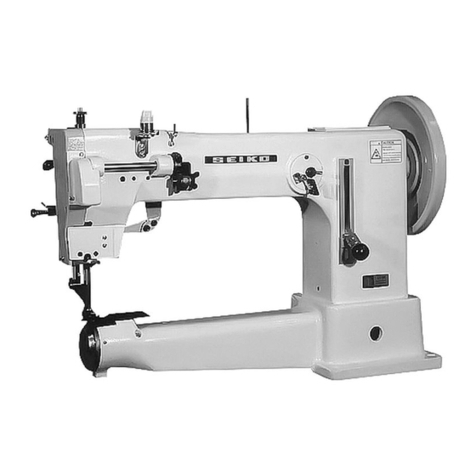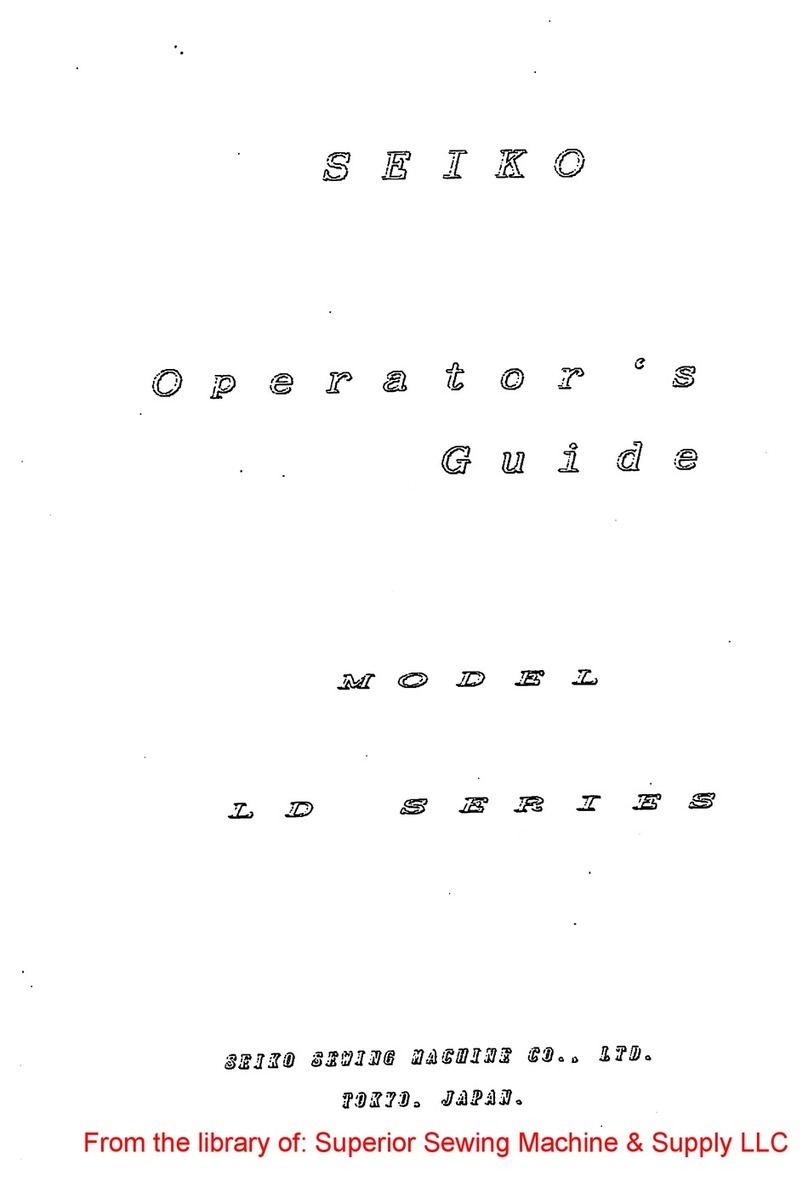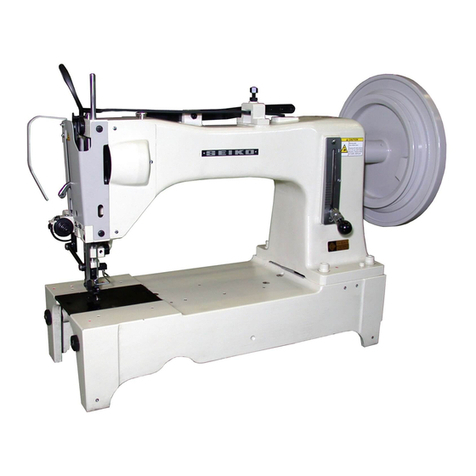THREAD
twist
thread
is
to
be
used
for
needle,
to test for twist, hold a length
/ \ ^
of
thread
between
thumbs
and
index
J
\^
fingers
of
your
hands.
Turn
the
thread
counterclockwise.
F'g*
If it will twist tighter, it has a left twist.
If it unravels, it has a right twist.
The
bobbin can be wound with either left or right twist thread.
WINDING BOBBINS (Figs. 2 and 15)
The
bobbin winder is mounted on the table top with its pulley (5, Fig. 2)
in front of the driving belt so that the
pulley
will separate from the belt after
the bobbin has been wound with suflicieiit thread, push the bobbin on the
bobbin spindle (3 Fig. 15) as far as it will go.
Pass the thread from the thread stand downward through the eye (1, Fig. 15)
in
the
tension
bracket.
Then,
between
and
around the back of the tension discs (2
Fig.
15) hring
the
thread
forward
toward
the
bobbin
and
wind
from
below
in
clockwise
direc
tion several times around the bobbin. Push bobbin winder lever (4, Fig. 15)
downward until the wheel (5) contacts the drive belt and
start
the machine.
After
the bobbin is filled with thread, release will cause the wheel to disen
gage from the belt and winding will stop. Cut the thread and remove the
bobbin from the winder spindle.
The
adjusting screw (A, Fig. 15) can be turned in or out to increase or
decrease
the
amount
of
the
thread
wound
on
the
bobbin.
If
the
thread does not wind evenly on bobbins, loosen
the
screw (B, Fig. 15)
and move the bracket to the right or left as may berequired and tighten the screw.
Fig. 15
— 6 —

